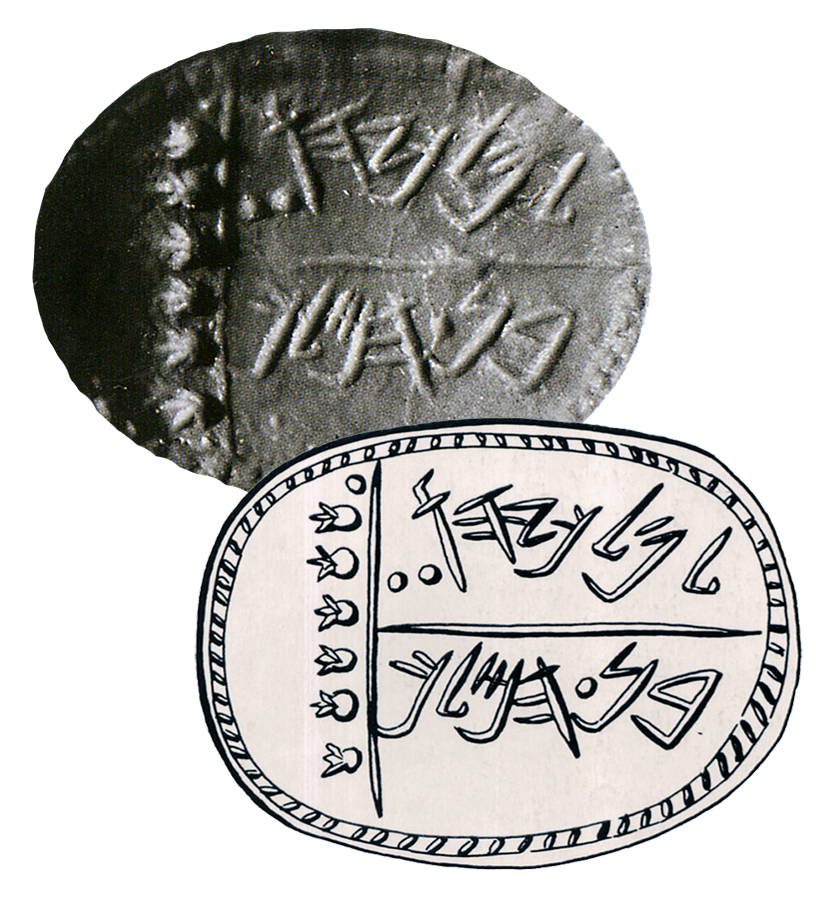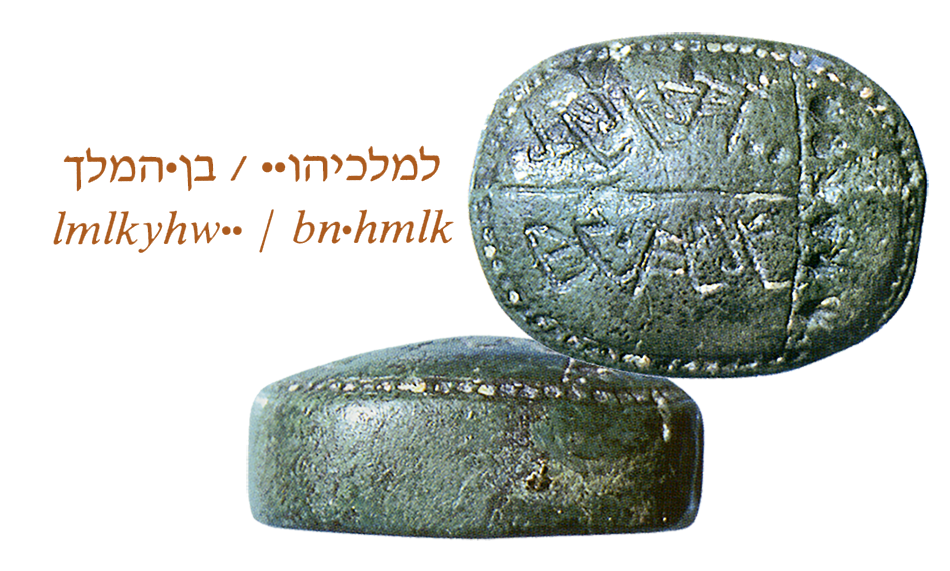
Bible, History, Archaeology
Bible,
History,
Archaeology
A Malkija seal,
king's son
In ancient times, officials authenticated their documents by marking them with a seal on a malleable surface such as fresh clay (bulla). Numerous imprints of Old Testament characters have been discovered. Sometimes, more rarely, the seal itself has been unearthed.
A seal acquired in the 1990s by a private collector refers us to a text from the book of the prophet Jeremiah, which describes one of the darkest periods in Israel's history (7th century BC).
 Historical background
Historical background
The prophet Jeremiah repeatedly warns King Zedekiah and the court of the imminent danger threatening the kingdom of Judah. The Neobabylonians led by Nebuchadnezzar II have invaded Judah and threaten Jerusalem (Jeremiah 38).
Exasperated by Jeremiah's admonitions, Zedekiah delivered the prophet into the hands of those bent on his downfall.
Image opposite: The seal of «Malkija, son of the king». In green malachite. André Lemaire.
Reading: Jeremiah 38:5-6
And King Zedekiah said, Behold, he is in your power, for the king can do nothing against you.
So they took Jeremiah and lowered him into the cistern of Malkija, son of the king, They lowered Jeremiah with ropes into the cistern, where there was no water but mud, and Jeremiah sank into the mud...

Image opposite: impression and design of the seal of «Malkija, son of the king». André Lemaire.
The king's son (or Hammélec's son)
The title «the king's son» is well known in the Old Testament, as the general designation of a high class of Israelite society. Only four specific figures are referred to in Scripture (1 Kings 22:26; Jeremiah 36:26; 38,6 and 2 Chronicles 28:7). Biblical scholars agree that it refers to a prince, but are unable to specify the political function that such a figure exercised within the kingdom.

 Historical background
Historical background